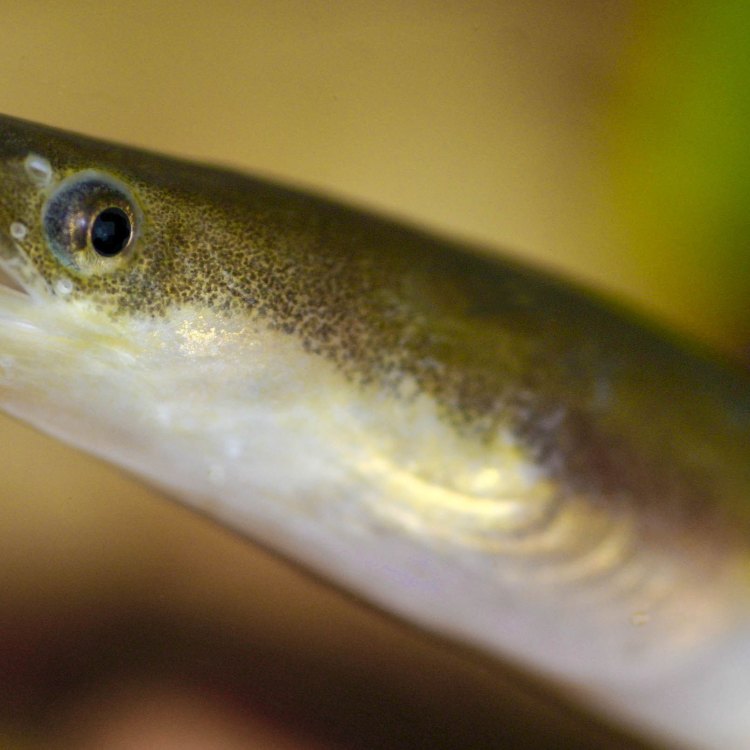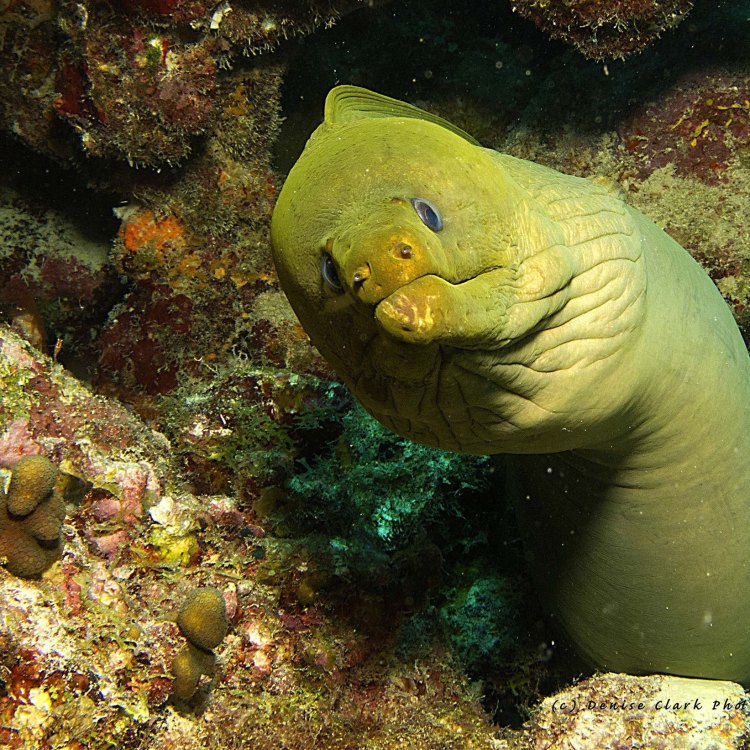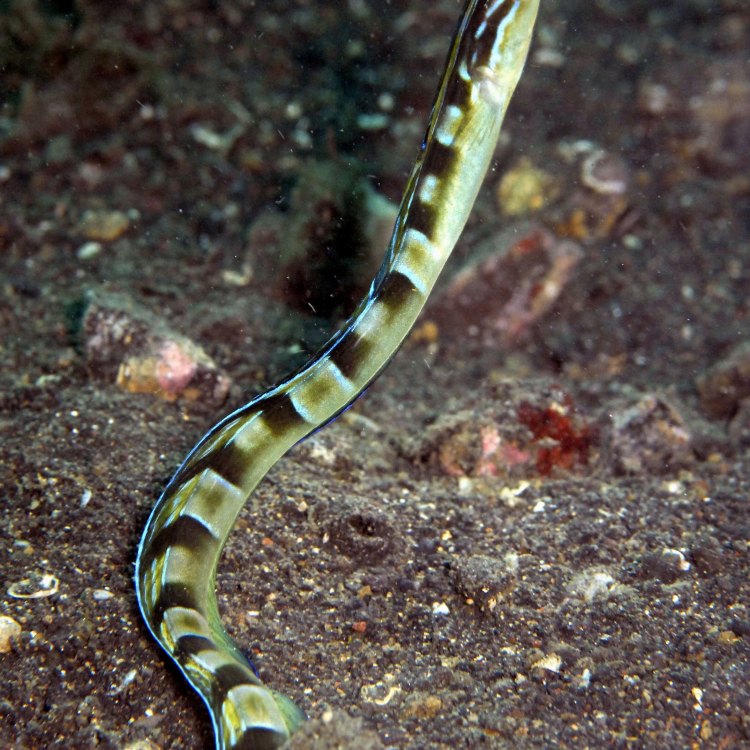
American Eel
Up to 4 feet (122 cm)
The American Eel is a fascinating creature found in rivers, streams, lakes, and coastal areas. With a slender and elongated body, this freshwater fish can grow up to 4 feet long. Belonging to the Anguillidae family, it is a popular catch for anglers in the US. Keep an eye out for this elusive creature on your next fishing adventure! #AmericanEel #Anguillidae #FreshwaterFish
Animal Details Summary:
Common Name: American Eel
Kingdom: Animalia
Habitat: Freshwater and saltwater
The Mysterious American Eel: A Fascinating and Elusive Creature
At first glance, the American Eel may seem like just another fish. However, this unique creature has captivated the curiosity of scientists and nature lovers alike with its mysterious behavior and incredible adaptability. From its origins in the eastern coast of North America to its interesting feeding habits, the American Eel continues to fascinate us with its elusive nature. In this article, we will dive into the world of the American Eel and discover what makes it such a remarkable animal American Eel.An Enigmatic Identity: Scientific Name and Classification
Let's start with the basics - the scientific name of the American Eel is Anguilla rostrata. This name comes from the Latin word "anguilla" which means "eel," and "rostrata" which refers to its long, snout-like mouth. The American Eel is a member of the Animalia kingdom, Chordata phylum, Actinopterygii class, and Anguilliformes order. It belongs to the Anguillidae family, which also includes other species of eels.A Habitat Fit for a Chameleon
One of the most interesting things about the American Eel is its habitat. This creature is found in both freshwater and saltwater environments, making it incredibly adaptable to various conditions. It is commonly found along the eastern coast of North America, stretching from Venezuela to Greenland. However, it can also be found in other parts of the world, including Europe and the Mediterranean.The American Eel is known for its ability to thrive in diverse habitats Angora Goat. Depending on its life stage, it can live in rivers, streams, lakes, and even coastal areas. However, it is highly migratory and will travel long distances to reach its preferred habitat. In fact, the American Eel can travel thousands of miles from its birthplace in search of suitable conditions.
A Carnivorous Diet: What Do American Eels Eat?
As a carnivorous creature, the American Eel feeds on a wide variety of organisms. In its larval stage, it primarily feeds on plankton, small crustaceans, and other microorganisms. As it grows, it starts to consume larger prey, such as fish and shrimp. Interestingly, adult American Eels have been seen cannibalizing smaller eels.The American Eel has a unique feeding method called pharyngeal biting. Instead of using their mouths to grasp prey, they use their pharyngeal jaws, located in their throat, to grasp and swallow their food. This allows them to catch and consume larger prey without the need for a wide mouth or sharp teeth.
The Mysterious Journey: Migration of the American Eel
One of the most fascinating aspects of the American Eel's life is its migration pattern. This creature undertakes one of the longest migrations of any freshwater fish, traveling from its freshwater habitat to the Sargasso Sea in the Atlantic Ocean to reproduce.After reaching sexual maturity, which can take anywhere from 5 to 25 years, the American Eel starts its journey to the Sargasso Sea. This journey can take several months to a year, and it includes traveling through various bodies of water, such as rivers and estuaries. The destination, the Sargasso Sea, is located in the middle of the Atlantic Ocean, between Bermuda and the Azores.
Once the eels reach the Sargasso Sea, they mate and lay eggs. The eggs then hatch into larvae, known as leptocephali, and start their journey back to the eastern coast of North America. This round-trip journey can take up to three years, with the larvae eventually developing into elvers, small eels that are around 2 inches in length. These elvers then travel upstream to live in freshwater habitats, where they continue to grow and mature.
The Elusive Nature and Life Span of the American Eel
Due to their migratory nature and elusive behavior, the American Eel has been a difficult animal to study and fully understand. Despite its long history and widespread range, there is still much to be learned about this mysterious creature.The American Eel reaches sexual maturity between the ages of 5 to 25 years, and its average lifespan is estimated to be 10 to 20 years. However, due to its migratory journey, it is difficult to determine the exact lifespan of this animal. Additionally, the American Eel has been known to go without eating for extended periods, which may also contribute to its lifespan.
A Chameleon in Appearance: Unique Traits of the American Eel
The American Eel may not be the most visually striking animal, but it has some unique characteristics that make it stand out. One of its most distinctive features is its coloration, which varies based on its surroundings. In freshwater environments, the American Eel is usually a greenish-brown color on its back and lighter yellow on its belly. However, when it migrates to saltwater, its color changes to a silver hue. This color-changing ability makes it a true chameleon of the sea.In terms of its body shape, the American Eel is slender and elongated, with a smooth, scaleless skin. This allows it to easily navigate through small spaces and hidden crevices. Its bodies can grow up to 4 feet in length (122 cm), making it a relatively large eel compared to other species.
The Importance of the American Eel in the Ecosystem
Despite its elusive nature, the American Eel plays a crucial role in the ecosystem. As a predator, it helps control the population of its prey, such as fish and crustaceans. It also serves as prey for larger predators, such as birds, mammals, and other fish.The American Eel also plays a vital role in nutrient cycling. As they travel to different habitats and consume various organisms, they serve as a source of nutrients for different ecosystems. When they die, their bodies also contribute essential nutrients to the surrounding environment, helping to support other organisms.
In Conclusion
The American Eel may seem like just another fish, but it is a remarkable creature with a fascinating story. From its migratory journey to its color-changing abilities and unique feeding method, this elusive animal continues to captivate our curiosity. As we continue to study and learn more about the American Eel, we can better appreciate its importance in the ecosystem and the incredible adaptability of this enigmatic creature.

American Eel
Animal Details American Eel - Scientific Name: Anguilla rostrata
- Category: Animals A
- Scientific Name: Anguilla rostrata
- Common Name: American Eel
- Kingdom: Animalia
- Phylum: Chordata
- Class: Actinopterygii
- Order: Anguilliformes
- Family: Anguillidae
- Habitat: Freshwater and saltwater
- Feeding Method: Carnivorous
- Geographical Distribution: Eastern coast of North America
- Country of Origin: United States
- Location: Rivers, streams, lakes, and coastal areas
- Animal Coloration: Greenish-brown on the back and lighter yellow on the belly
- Body Shape: Slender and elongated
- Length: Up to 4 feet (122 cm)

American Eel
- Adult Size: Up to 5 feet (152 cm)
- Average Lifespan: 10-15 years
- Reproduction: Catadromous
- Reproductive Behavior: Matures in the ocean and returns to freshwater to spawn
- Sound or Call: No sound production
- Migration Pattern: Long-distance migration from freshwater to the Sargasso Sea
- Social Groups: Solitary
- Behavior: Nocturnal and secretive
- Threats: Habitat loss, pollution, overfishing
- Conservation Status: Not Evaluated (NE)
- Impact on Ecosystem: Important role as a predator and prey species
- Human Use: Commercial fishing, aquaculture, recreational fishing
- Distinctive Features: Long, slim body with small scales and a continuous dorsal and anal fin
- Interesting Facts: American Eels are able to survive in various water conditions, from freshwater to saltwater, and can even travel overland to reach new habitats.
- Predator: Predator include larger fish, birds, and mammals

Anguilla rostrata
The Fascinating World of the American Eel: Surviving in Diverse Environments
The American Eel, also known as the Atlantic Eel, is a unique and mysterious species that calls the waters of North America home. While it may not be as well-known as other fish species, this incredible creature holds many fascinating secrets and plays a crucial role in the ecosystems it inhabits. From its long-distance migration patterns to its ability to survive in various environments, the American Eel is a species that continues to captivate and surprise scientists and researchers alike.Let's dive into the world of the American Eel and discover what makes this species one of a kind PeaceOfAnimals.Com.
Size and Lifespan
The American Eel is not your average fish. With an adult size that can reach up to 5 feet, or 152 cm, this species is considered one of the largest freshwater fish in North America. It has a long and slim body, with small scales and a continuous dorsal and anal fin, giving it a snake-like appearance.When it comes to lifespan, the American Eel can live up to 10-15 years. However, this can vary depending on factors such as habitat, food availability, and reproductive success. Some eels have even been known to live up to 25 years. This long lifespan allows them to play a critical role in the ecosystems they inhabit.
Reproduction and Migration
The reproductive behavior of the American Eel is truly remarkable. This species is catadromous, which means they mature in the ocean but return to freshwater to spawn Ant. This journey is no easy feat, as it involves navigating through various obstacles, including dams, to reach their desired spawning grounds. In some cases, eels can travel hundreds of miles to reach their destination.Once they reach their spawning grounds, eels undergo a transformation. They lose their pigmentation and become a darker color, known as a "silver eel." This transformation allows them to blend in with their surroundings and protect themselves from predators.
After spawning, adult eels die, and the young eels or "glass eels" make their way back to freshwater, where they will spend most of their lives before repeating the cycle. This migration pattern from freshwater to the Sargasso Sea, a region in the Atlantic Ocean, is a long-distance journey that showcases the resilience and determination of this species.
Behavior and Social Groups
The American Eel is a solitary species, meaning they do not form social groups or live in schools like other fish. They are also known to be nocturnal and secretive creatures, often hiding in crevices or burrowing themselves in the mud for protection during the day. This behavior makes them challenging to study and observe in the wild.Threats and Conservation
The American Eel faces various threats in its environment, including habitat loss, pollution, and overfishing. These threats are caused by human activities and are considered the main reasons for the decline in eel populations in recent years.Habitat loss is a significant threat to eels, as dams and other man-made barriers can block their migration routes and disrupt their spawning cycles. Pollution, such as chemicals and plastic waste, can also have a devastating impact on eels, as they can be absorbed through their skin and harm their health.
Overfishing is another significant threat to the American Eel. This species has been commercially fished for centuries, and with the growing demand for eel products, populations have declined significantly. Eels are also caught for recreational fishing and used in aquaculture, where they are raised in captivity for food production.
Unfortunately, due to the lack of data and research on eel populations, the American Eel is listed as "Not Evaluated" (NE) on the IUCN Red List. This means that there is not enough information available to determine the conservation status of this species. However, some efforts are being made to protect and conserve eel populations, such as building fish passages and reducing pollution in their habitats.
Impact on the Ecosystem and Human Use
The American Eel may be a solitary species, but its presence plays a crucial role in the ecosystems it inhabits. As a predator, eels consume various small aquatic creatures, such as fish, insects, and crustaceans. In turn, they also serve as prey for larger species, such as birds and mammals. This balanced role as a predator and prey species contributes to the overall health and diversity of their ecosystem.In terms of human use, the American Eel has been commercially fished for centuries, with its meat and skin used in various dishes, including sushi. Eels are also farmed in aquaculture to meet the high demand for their products. However, efforts are being made to ensure the sustainability of eel fishing and aquaculture to prevent further declines in their populations.
Interesting Facts
Aside from its incredible traits and behaviors, the American Eel also has some interesting and unique facts that make it even more fascinating. Did you know that eels can survive in various water conditions, from freshwater to saltwater, and can even travel overland to reach new habitats? This impressive ability allows them to adapt and thrive in diverse environments, making them true survivors.Predators
As mentioned earlier, the American Eel has a crucial role as both predator and prey in its ecosystem. Predators of adult eels include larger fish, birds, and mammals such as otters and raccoons. These predators play an essential role in maintaining the balance of eel populations and ensuring their survival.In conclusion, the American Eel may not be as well-known as other fish species, but it is undoubtedly a fascinating and unique creature. From its long-distance migration patterns to its ability to survive in diverse environments, the American Eel continues to surprise and intrigue scientists and researchers. However, with various threats and challenges facing eel populations, it is essential to raise awareness and take action towards conserving this incredible species.

The Mysterious American Eel: A Fascinating and Elusive Creature
Disclaimer: The content provided is for informational purposes only. We cannot guarantee the accuracy of the information on this page 100%. All information provided here may change without prior notice.












